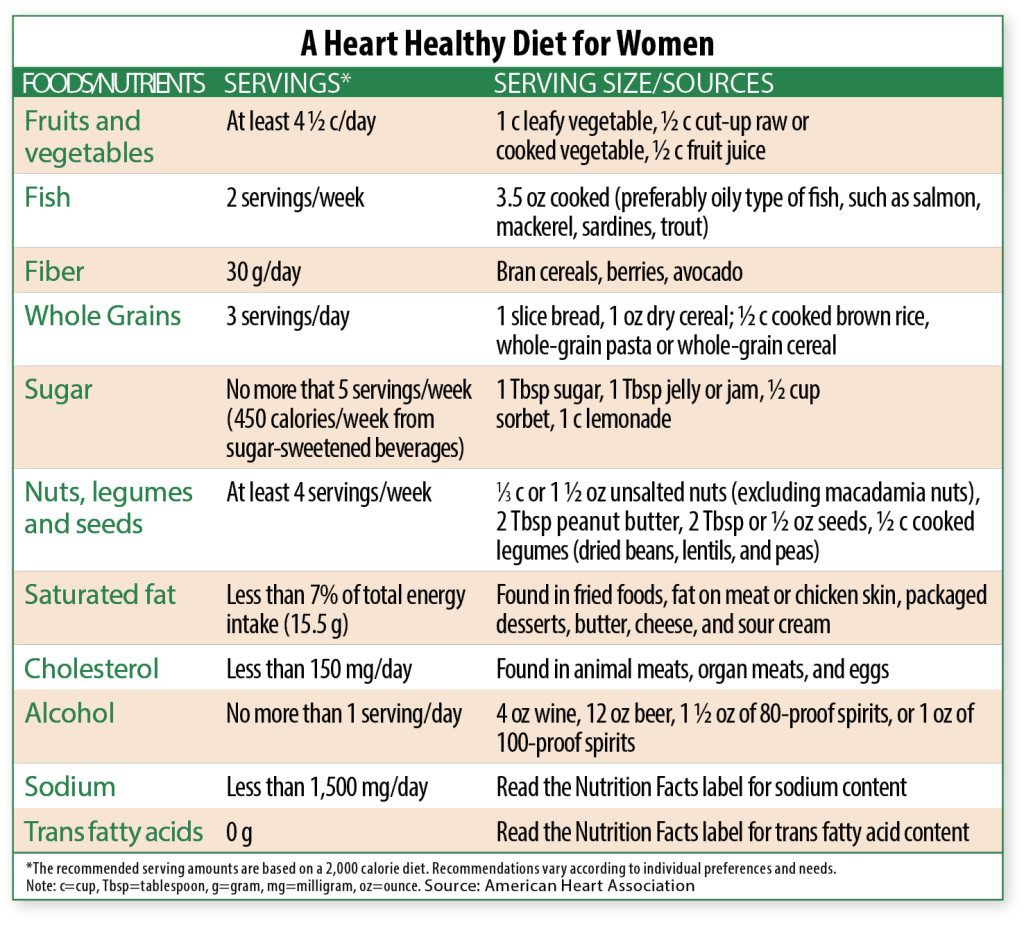Heart Disease Is a Woman’s Disease
In the U.S., 1 in 4 women will die from heart disease—almost half a million deaths each year—yet the perception that heart disease is primarily a man’s disease persists. An American Heart Association survey found that fewer than one-half of American women are aware that heart disease is their leading killer. The reality is quite different—coronary heart disease (CHD) is the #1 killer of both men and women in this country. CHD occurs when plaque (made up primarily of fat, cholesterol and calcium) builds up on the inner walls of coronary arteries, preventing the flow of oxygen-rich blood to the heart. This build up of plaque is called atherosclerosis and it can trigger a heart attack. While this basic process of CHD is the same for men and women, the disease, its symptoms and its outcomes differ be-tween the sexes in other ways.
Female Facts of the Heart. Women with diabetes have twice the risk of CHD compared with men, and heart attacks among women with diabetes are more deadly. Women tend to develop CHD about 10 years later (after menopause) than men, perhaps contributing to the misbelief that women are less likely to develop the disease. Even if a woman has no symptoms, she may still be at risk. About two-thirds of women who die suddenly of CHD have had no previous symptoms. When women do have symptoms, they tend to differ from those of men. The Hollywood image of a man clutching his chest is less likely to happen to women, who are more likely to have pain in the neck, jaw, throat, abdomen or back than in the chest. Women may also experience lightheadedness, an upset stomach, and sweating when having a heart attack. It’s important not to ignore these signs, as heart attacks are generally more severe in women than in men.
Heart Disease Prevention Tips for Women. The American Heart Association has specific recommendations for the prevention of heart disease in women, including:
► Stop smoking and avoid environmental tobacco smoke.
► Accumulate at least 150 min/week of moderate exercise, 75 min/week of vigorous exercise, or an equiv-alent combination of moderate- and vigorous-intensity aerobic physical activity.
► Consume omega-3 fatty acids eicosapentaenoic acid (EPA) and docosahexaenoic acid (DHA) in the form of fish (at least twice a week) or in capsule form (i.e., EPA 1800 mg/day).
► Eat a diet rich in fruits and vegetables; choose whole-grain, high-fiber foods; limit intake of saturated fat, cholesterol, alcohol, sodium and sugar; and avoid trans fatty acids (See “A Heart Healthy Diet for Women”).
A Heart Protective Lifestyle. A Harvard study, recently published in the Journal of the American College of Cardiology, looked at young and middle-aged women and followed them for 20 years until the oldest was 64 years of age. The researchers found that diet, exercise, healthy weight, and moderate alcohol were about equally important for reducing risk for heart disease. “Interestingly, moderate alcohol intake became more beneficial in older women, but the other factors continued to be equally important,” says Eric Rimm, ScD, Professor of Epidemiology and Nutrition Director, Program in Cardiovascular Epidemiology at Harvard Medical School, who was an author of the study. On the other hand, excessive alcohol intake increases risk. But, he added that aside from not smoking, maintaining a healthy weight may be most important, since it requires that you eat a healthy diet and exercise. Rimm says, “Keeping a healthy weight is important because it represents better adherence to many healthy lifestyle factors and it is associated with other important metabolic parameters, such as lower blood sugar and lower blood pressure.”
—Densie Webb, PhD, RD
The post Heart Disease Is a Woman’s Disease appeared first on University Health News.
Read Original Article: Heart Disease Is a Woman’s Disease »
Powered by WPeMatico



